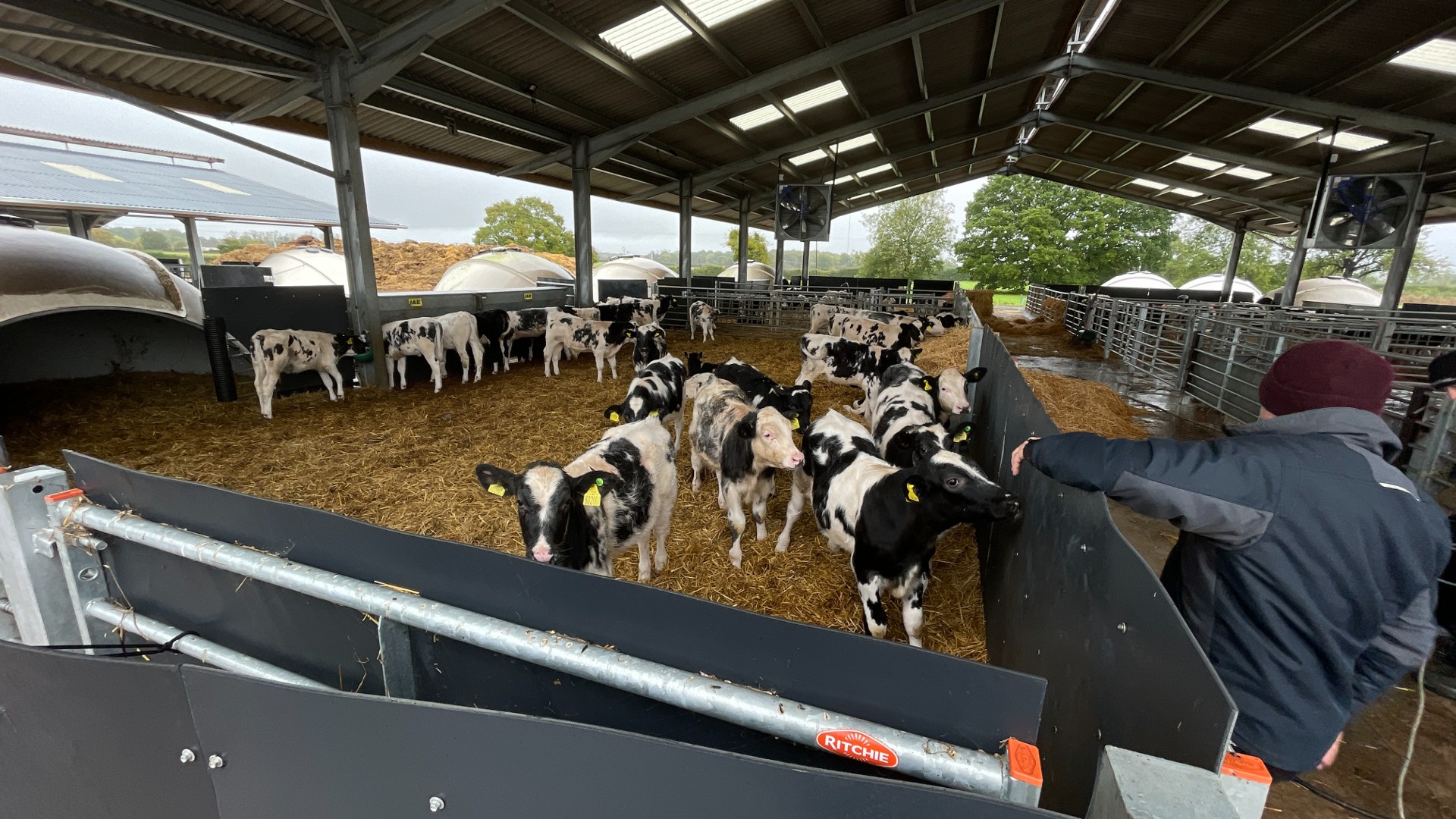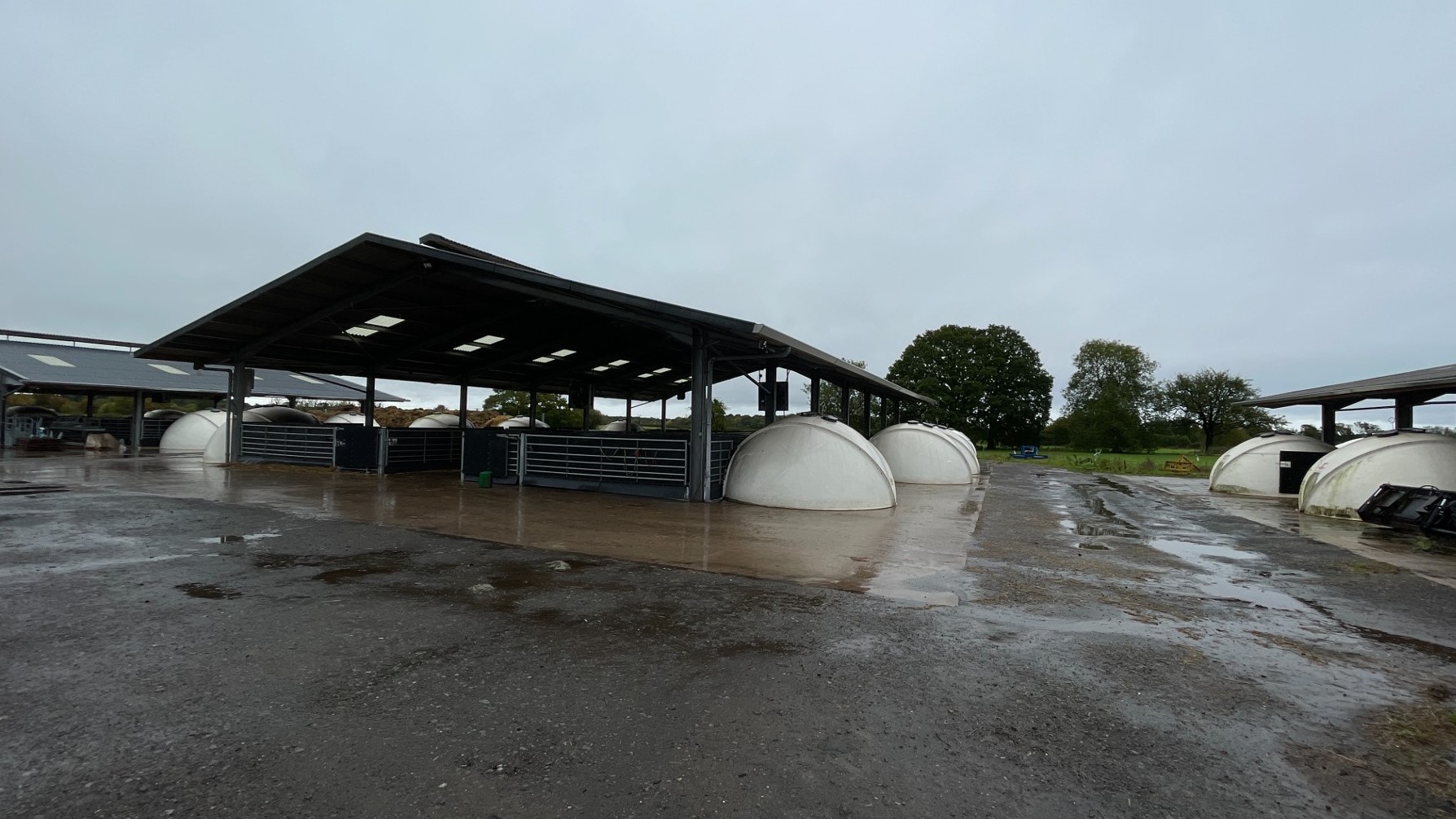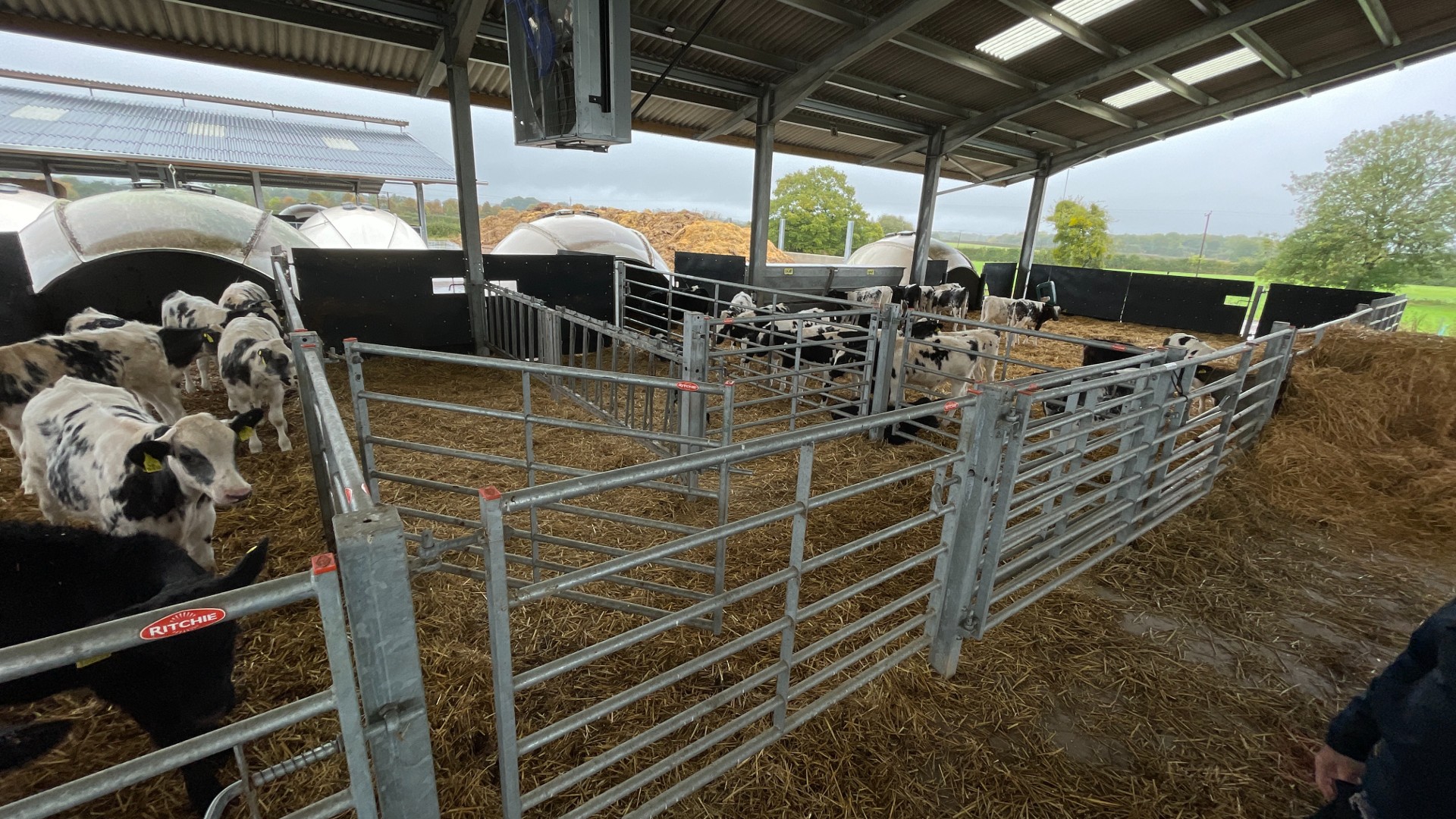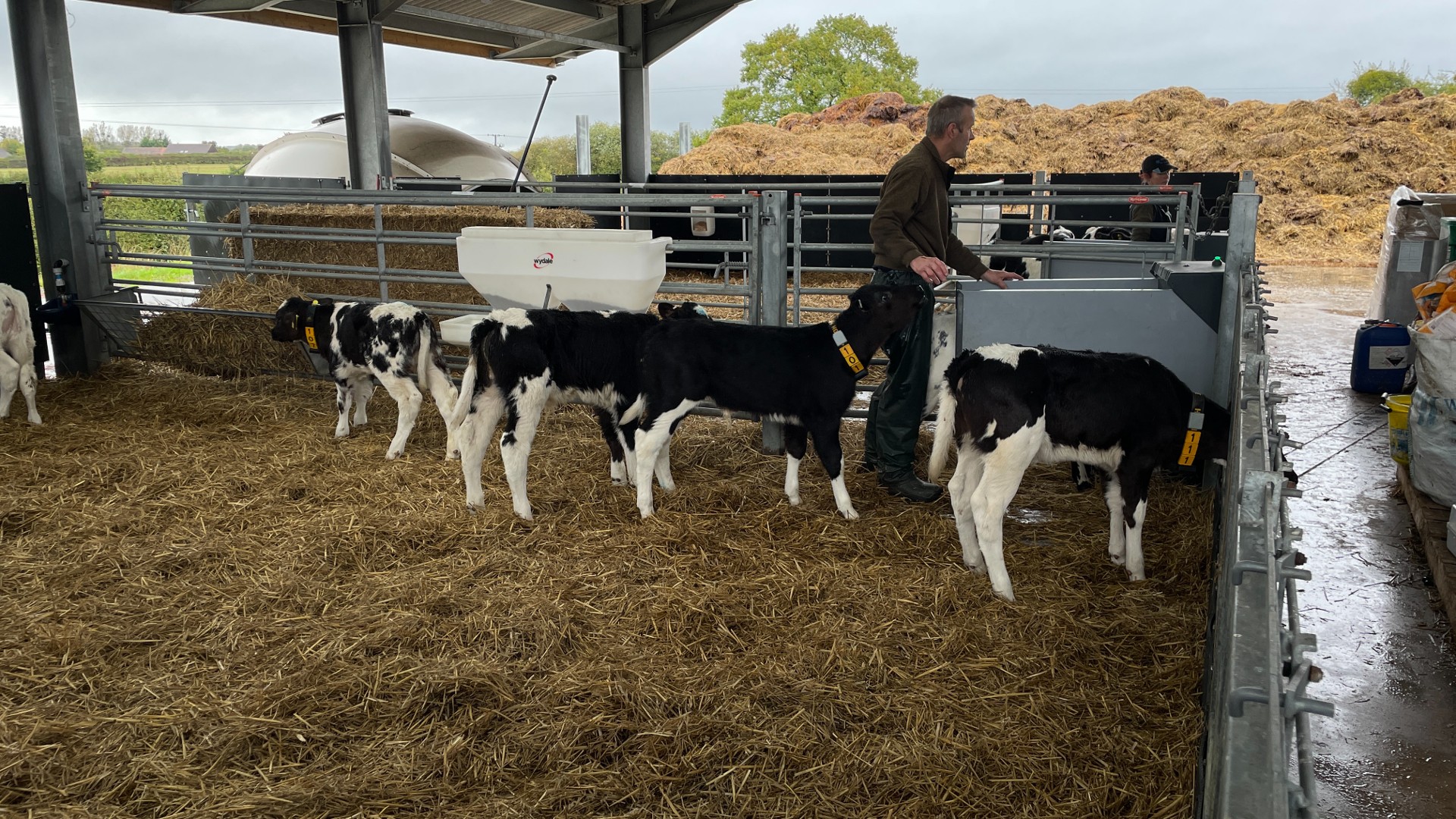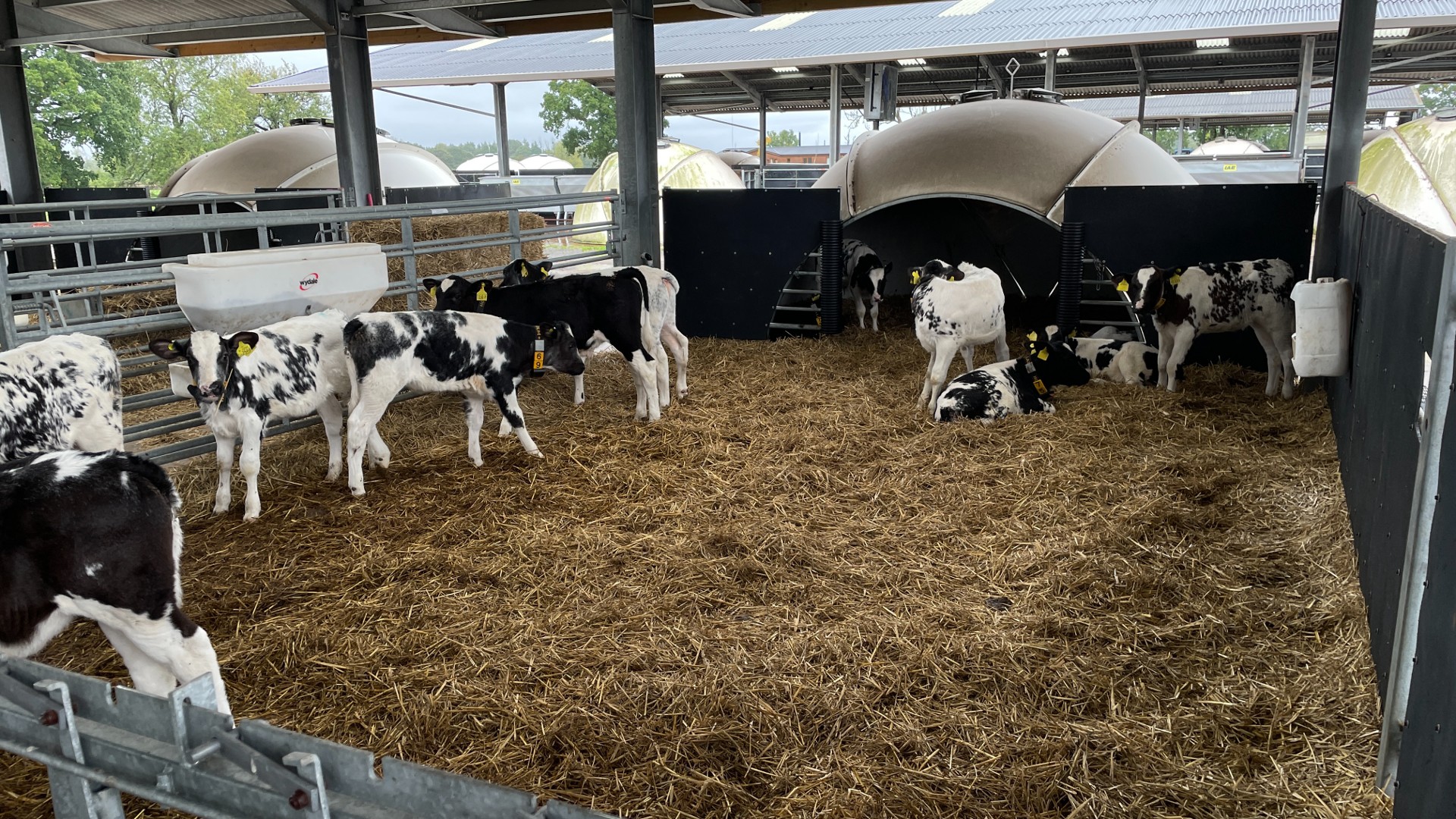I forgot everything about calf rearing ...
15. März 2024 — Calf Husbandry, Practice report, Calf feeders — #Work management #Great Britain #IglooSystem #Ventilation #GrowthRob Collins and his wife Hanna Moule raise veal calves together with their team on their Cobblers Farm in Worcester, England. They bought the farm in 2013 and started building a calf barn with Holm & Laue Igloos in 2017. Their first calves moved in March 2018. Rob relates his experience with this barn concept, which was something new for him at the time.
This article is about
"When planning our calf rearing, we have always focussed on three important areas:
- Surroundings and climate conditions,
- Rearing management,
- Diet.
And we still focus on these points in our daily work with the calves.

A completely fresh start
As a teenager, I reared calves with my family until I was 17 years old. From then on I had nothing more to do with calves and forgot everything. And I think that was a good thing!
I wanted to take part in a calf rearing programme run by Meadow Quality. I needed this farm to do this, but there was nothing on it but an old shed. We therefore took a look at many different calf rearing systems. But somehow we kept coming back to the Holm & Laue concept, as we saw with Joff and Emma Roberts (Editor's note: CalfIgloo, H&L's distribution partner in the UK).
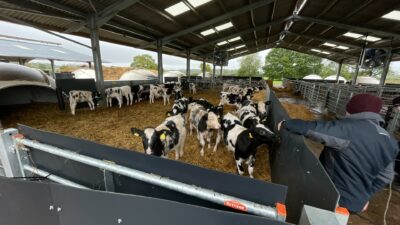
A Meadow Quality advisory group for calf rearing compared data from 10 different farms. Four of these farms used large-capacity igloos from Holm & Laue. And these igloo operations produced by far the best results. Our minds were already made up: it had to be the igloos.
The wind is your friend!
The orientation of the igloo building was an important consideration during the planning phase. Joff advised us to construct the building with an east-west orientation. This advice turned out to be spot on. He also advised us to set up additional bays alongside the actual calf groups. They afford the calves protection and we still have the necessary exchange of air.
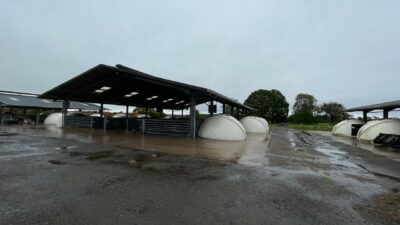
It's very windy here. Initially it scared me, because I believed that draughts were not good for the calves. And the igloo system is open to the maximum. I thought the calves would drop like flies. But today I know: "The wind is your friend”. The fresh air transports pathogens and harmful gases out of the barn. And whenever the wind gets too strong, we close the grilles to protect the calves from draughts. We've achieved both here: good air exchange and maximum protection for our calves.
Summers in England are becoming increasingly warmer. We never used to have temperatures over 30 °C in this area. Today, we experience these temperatures on several days in summer and there is a real risk that we will hit 40 °C. That's why we installed large fans under the roof. They've already proved their worth. This is because we can use the fans to blow germ-laden air out of the barn when there's no wind.
Losses of less than 0.5 %
All boxes are equipped with safety fences. We feed our calves with the H&L 100 feeder and don't actually need the fences for feeding. But the fences are very suitable for monitoring and treating calves. So our calves are very healthy. The loss rate is relatively stable at 0.44% over the entire rearing phase.
Of course we also see cases of illness, but we can manage them well. Our current vaccination programme has enabled us to reduce the number of cases requiring treatment to below 20 %. In some batches it is even below 10 %. It very much depends on the weather.
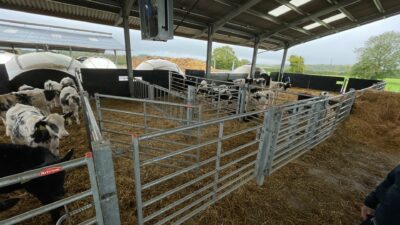
Days with a lot of wind and a constant exchange of air do not cause any problems. However, damp days with fog or very warm days are a problem. I don't know why, but even on hot days our calves like to lie in the igloo. I was planning to install additional fans to improve the ventilation there. (Editor's note: Holm & Laue has already addressed this issue with their new bedding and ventilation flap.)
From 300 calves a year to 1,300
At the beginning, we reared 280 to 300 calves a year in our first barn. But we soon added a second barn and were able to increase the number of calves. Meadow Quality is now running a new project with 900 to 1,000 calves per year, where the genetic performance of the animals is being tested. A great deal of data is collected on the fattening farm subsequent to our calf rearing programme. DNA tests then aim to find out which paternal line achieves the best breeding results.
And that's not the end of the story: our goal is 1,300 calves per year. Today we have pens with 15 to 16 calves in a group. We now plan to extend the existing barn by adding more igloos at each end. This will allow us to increase the group size to around 20 calves and actually rear the target 1,200 to 1,300 calves a year. And all this in the same barn.
It must be possible for one person to do the work.
Calves arrive at the age of 3 weeks with a body weight of approx. 75 kg. They stay with us for around 9 to 10 weeks and achieve a body weight of at least 140 kg by the time they are 13 weeks old. This means we have a daily weight gain of between 1,000 and 1,100 g. That's brilliant!
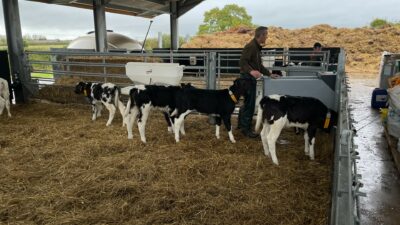
We have a rule here on the farm: it must be possible for every task to be performed by a single person. And because our work is organised so straightforwardly, we all enjoy working here. And the barn is generally a very pleasant place to work.
We use two H&L 100 feeders to feed the animals. They work really well. We purchased our first H&L 100 second-hand, which is now about 13 years old. And the second H&L 100 has been in operation since 2020.
We positioned the drinking stations close to the feeders. They are installed in such a way that we can easily guide the calves into the stations.
Unfortunately, we forgot to include the water connections and drains when we planned the igloo barn. That's why it looks a bit chaotic at the moment. We had to improvise quite a lot. But we were able to make sure that we had a frost-proof water supply to the feeder, which means that the frost protection programme works perfectly. The feeders have never frozen up.
When the calves arrive, they are vaccinated and trained at the feeding stations. And we were thrilled right from the start at how quickly the calves got used to the stations.
I love these igloos!
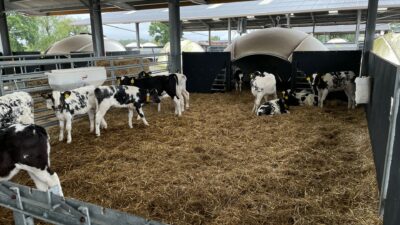
In conclusion, I can say: "I love these Holm & Laue igloos!"
I've seen many barns that are fully climate-controlled and they all have problems. And then they are also four times as expensive as our barn."


